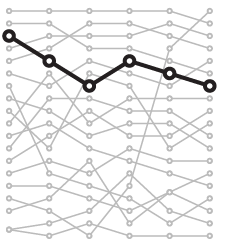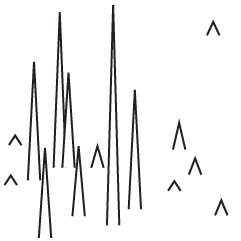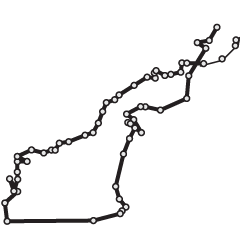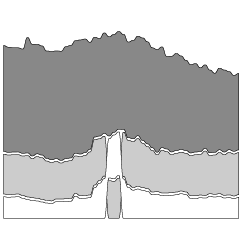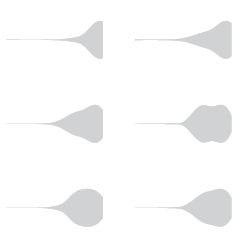Memeorandum shows up-to-date posts from leading political bloggers, and it is well-known that political bloggers are often very partisan. It’s not always obvious to new readers though which side of the line a blogger sits on. You certainly can’t always tell just from a headline on Memeorandum. So Andy Baio, with the help of del.icio.us founder, Joshua Schachter, created a Greasemonkey script (and Firefox plugin) to do just that. Simply install the script and browse popular political articles by their bias.
With the help of del.icio.us founder Joshua Schachter, we used a recommendation algorithm to score every blog on Memeorandum based on their linking activity in the last three months. Then I wrote a Greasemonkey script to pull that information out of Google Spreadsheets, and colorize Memeorandum on-the-fly. Left-leaning blogs are blue and right-leaning blogs are red, with darker colors representing strong biases.
Just a quick glance at Memeorandum with the plugin installed shows the magic works.
How it Was Done
Of course this isn’t just magic. It’s not human-powered. It’s a data-driven algorithm. It’s statistics. The data are the articles that the Memeorandum-listed blogs link to, so just imagine a giant matrix with number of links. They then use singular value decomposition (SVD) to reduce that matrix to one dimension which they use to estimate where on the political spectrum any given blog on Memeorandum sits.
All you statistics readers (and maybe some of the computer scientists) should be familiar with SVD. I learned about it and played with it quite a bit during my first year in graduate school. Anyways, it’s cool to see statistics at work and how it can be useful in visualization. A lot of the time visualization projects are about getting all the data on the screen, but with a little bit of know-how (or help from someone who has it) you can produce projects that let the computer do a lot of the pattern-finding work and don’t make the user work so hard.
By the way, Andy’s blog Waxy has become one of my favorite blogs as of late, so if political bias isn’t your thing, I’d still encourage you to go check it out.
 Thousands of bloggers are taking the time to discuss a single topic today – poverty. As we sit in our cozy homes, go out to eat, watch movies, or simply read the news on a computer, it’s easy to forget that there are millions of people around the world who aren’t so well off. Blog Action Day is an opportunity to remember and to perhaps help out in some way.
Thousands of bloggers are taking the time to discuss a single topic today – poverty. As we sit in our cozy homes, go out to eat, watch movies, or simply read the news on a computer, it’s easy to forget that there are millions of people around the world who aren’t so well off. Blog Action Day is an opportunity to remember and to perhaps help out in some way.




 Visualize This: The FlowingData Guide to Design, Visualization, and Statistics
Visualize This: The FlowingData Guide to Design, Visualization, and Statistics
